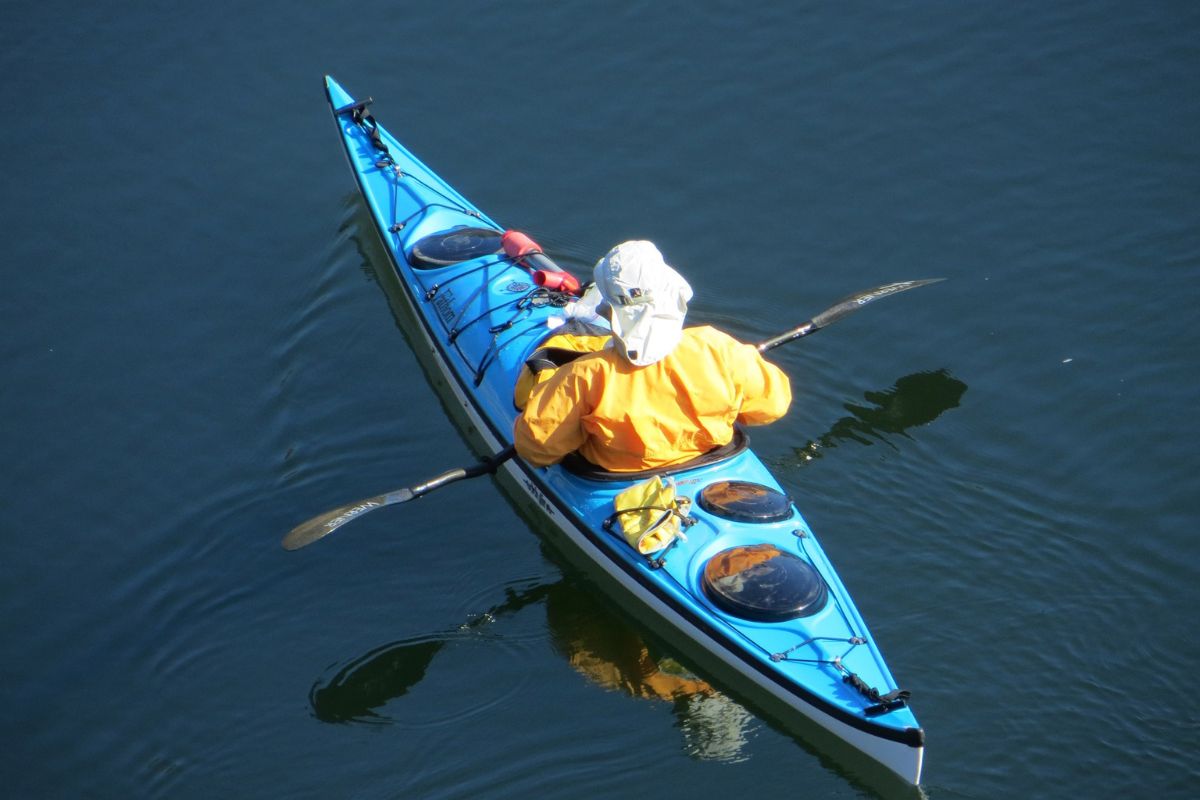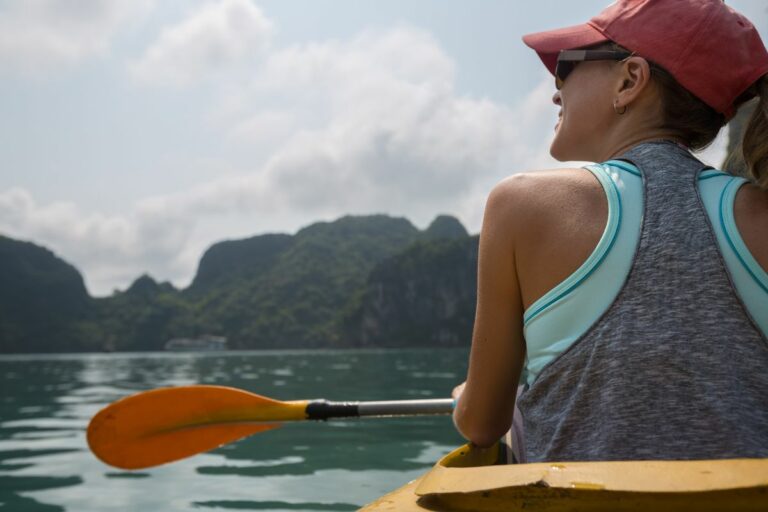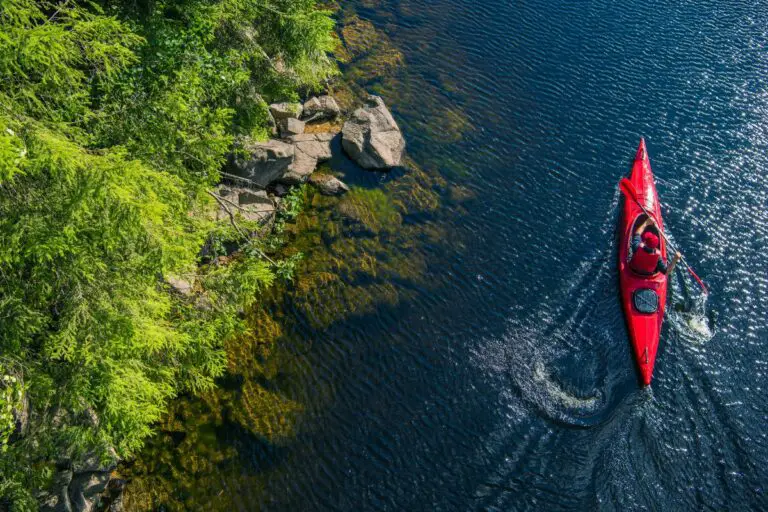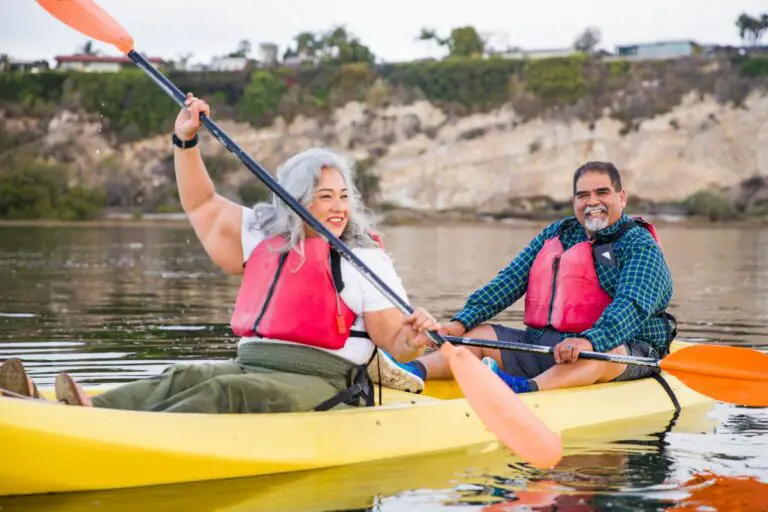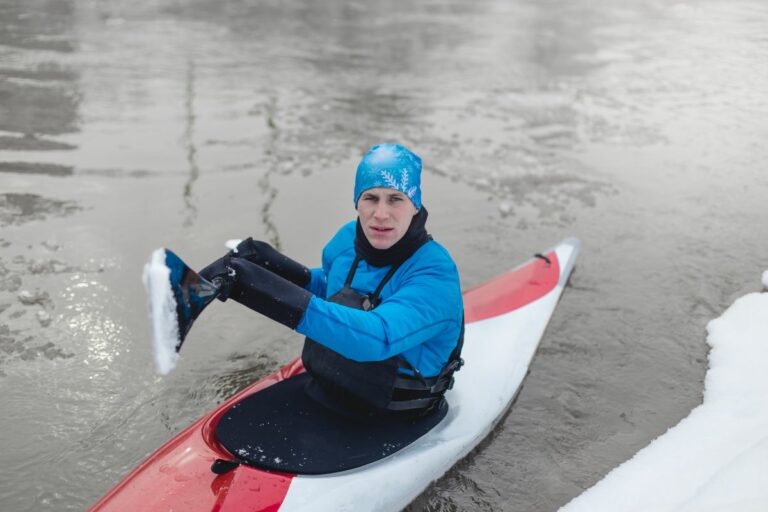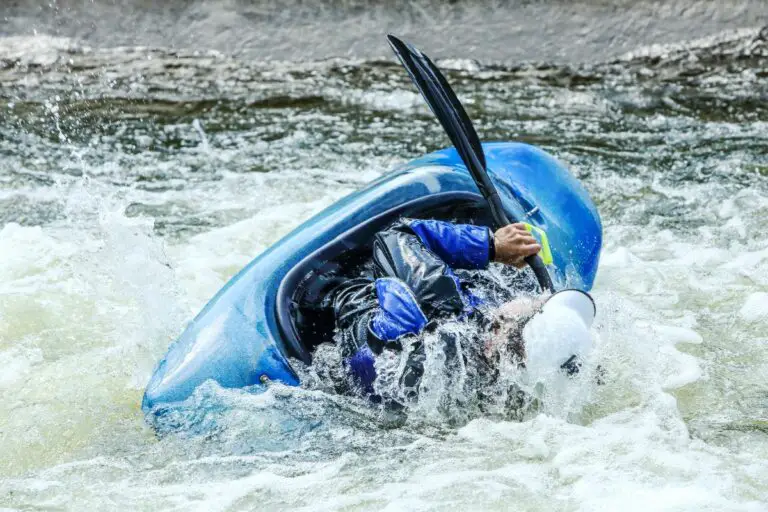What to Wear When Kayaking in the Rain? 5 Critical Clothing Items
Kayaking is a relaxing outdoor activity that allows you to explore the beauty of nature. However, like any other outdoor activity, it requires proper planning and preparation, especially when it comes to clothing.
Weather conditions can quickly change when you are out on the water, and kayaking in the rain, in particular, presents unique challenges that require special attention to your attire.
Wearing appropriate clothing can make all the difference and keep you comfortable and dry. So, what to wear when kayaking in the rain?
When kayaking in the rain, it is important to wear multiple layers of waterproof or quick-drying clothes. You can wear a wetsuit or drysuit in colder temperatures, while a jacket and pants are suitable for warmer temperatures. It’s also recommended to wear a hat, gloves, and waterproof footwear.
Keep reading to learn more about what to wear and what not to wear when kayaking in the rain and why it is important to wear weather-appropriate clothing when kayaking.
Table of Contents
What to Wear When Kayaking in the Rain?

When kayaking in the rain, it is essential to wear clothing that will keep you warm and dry throughout your trip.
Here are some key considerations when choosing what to wear:
- Waterproof or quick-drying clothing: Look for clothing made from materials such as Gore-Tex or other waterproof/breathable fabrics. This will help keep you dry and comfortable, even in heavy rain.
- Wetsuit or drysuit: In colder temperatures, wearing a wetsuit or drysuit is recommended.
- Rain jacket and pants: If the weather is warmer, a rain jacket and pants made from waterproof materials can keep you dry without the need for a wetsuit or drysuit.
- Hat and gloves: These will keep your head and hands warm and dry. Look for hats and gloves made from waterproof or quick-drying materials.
- Waterproof footwear: Wear shoes or boots that are waterproof or at least quick-drying. This will prevent your feet from getting wet and cold, which can be uncomfortable and even dangerous.
What NOT to Wear When Kayaking in the Rain?
Knowing what not to wear when kayaking in the rain is just as important as knowing what to wear. Here are some things to avoid:
- Cotton clothing: Cotton is notorious for absorbing and holding moisture, which means that if you wear cotton clothing while kayaking in the rain, it will get wet and stay wet, making you feel cold and uncomfortable.
- Heavy clothing: Avoid wearing heavy clothing, such as denim jeans or bulky jackets. Heavy clothing will weigh you down and make it difficult to move freely, which can be dangerous if you need to swim or climb back into your kayak.
- Flip flops or open-toed shoes: These types of footwear are not suitable for kayaking in any weather, as they offer no protection from the elements and are easy to lose in the water.
- Jewelry or loose accessories: Jewelry, scarves, and other loose accessories can get caught in the kayak’s moving parts or get lost in the water.
- Dark colors: It is best to avoid dark-colored clothing as they absorb more heat, which can make you feel warmer in hot weather but colder in cold weather.
How Many Layers to Wear When Kayaking in the Rain?
When kayaking in the rain, wearing multiple layers of clothing is (highly) recommended to stay warm and dry.
The exact number of layers you need will depend on the temperature and weather conditions, but a good rule of thumb is to wear three layers:
- Base layer: The base layer is the layer closest to your skin and is designed to wick moisture away from your body.
- Choose a moisture-wicking material such as synthetic fabrics or wool to keep you dry.
- Insulating layer: The insulating layer is the middle layer and provides warmth.
- Fleece jackets, down vests, or synthetic jackets are good options for the insulating layer.
- Outer layer: The outer layer is designed to protect you from rain and wind.
- Choose a waterproof and breathable jacket that will keep you dry but also allow moisture to escape.
If the temperature is very cold, you may need to add additional layers, such as a thermal layer, to keep you warm. However, be careful not to wear too many layers, as this can restrict your movement and make it difficult to paddle effectively.
Other Tips for Choosing the Right Clothes for Kayaking
In addition to the specific clothing recommendations for kayaking in the rain, here are some other tips to help you choose the right clothes for your kayaking adventure:
- Always wear a Personal flotation device (PFD): Wearing safety gear is essential regardless of the weather. PFDs can help keep you afloat and provide additional warmth if you get wet.
- Check the weather forecast: Always check the weather forecast before heading out on your kayaking trip. This will help you anticipate any weather changes and adjust your clothing accordingly.
- Avoid baggy clothing: Baggy clothing can get caught on your kayak’s moving parts or in the water, which can be dangerous. Instead, wearing Tight-fitting clothing or clothing with adjustable straps is better.
- Bring extra clothes: Always bring extra clothes in case the weather changes unexpectedly or you get wet. Also, make sure to store the extra clothes in a waterproof bag to keep them dry.
- Protect yourself from the sun: Wear a hat, sunglasses, and sunscreen to protect yourself from the sun while kayaking. Even on cloudy or rainy days, the sun’s UV rays can be harmful to your skin.
The Importance of Wearing Weather-Appropriate Clothes When Kayaking
Wearing weather-appropriate clothes when kayaking is crucial for several reasons:
- Comfort: Wearing the right clothes will help you stay comfortable throughout your kayaking trip.
- In hot weather, lightweight and breathable clothing will prevent overheating, while in cold weather, insulating layers will keep you warm.
- Safety: Wearing the right clothing is important for your safety while kayaking.
- If you get wet or cold, you may become fatigued, which can impair your ability to paddle or swim in case of an emergency.
- Protection: Wearing appropriate clothing can protect you from the elements while kayaking.
- Sunscreen and a hat can protect you from the sun, while rain jackets and quick-drying clothing can keep you dry during rain or waves.
- Performance: The right clothing can also help you perform better while kayaking.
- Clothing that is too tight or restrictive can limit your movement and make it difficult to paddle or maneuver your kayak effectively.
So, by dressing appropriately, you can fully appreciate the beauty of kayaking in the rain without worrying about discomfort or danger.
What to Do If Your Clothes Get Wet While Kayaking?
If your clothes get wet while kayaking, it’s important to take action to stay warm and prevent hypothermia and other cold-related illnesses.
Here are some steps you can take if your clothes get wet:
- Remove wet clothing: If possible, remove any wet clothing and replace it with dry clothes.
- If you don’t have a change of clothes, try to remove any wet layers and wrap yourself in a dry blanket or towel.
- Get out of the wind: If it’s windy, try to get out of the wind to prevent further heat loss. This could mean paddling to shore or finding a sheltered spot to wait out the weather.
- Stay active: If you’re still on the water, try to stay active by paddling or doing some light exercise to generate heat.
- Seek shelter: If you’re on land, try to find a shelter, such as a tent or a cabin. Once you reach a shelter, build a fire, if possible, to help dry out wet clothes.
- Use body heat: If you’re in a group, huddle together to share body heat and stay warm.
Remember that prevention is always the best approach, so it’s important to wear appropriate clothing and protective gear to prevent getting wet in the first place.
Kayak your way to Freedom
- On a budget? Check out the best fishing kayaks under $500 here and the best Fishing Kayaks under $1,000 here. Or Check the best Cheap Kayaks here.
- Going fishing? Here are the best Ocean fishing kayaks, and here are the best River Fishing Kayaks.
- You can also find the best Fly Fishing Kayaks here and the best Bass Fishing Boats here.
- A bit experienced? Check out the best modular kayaks here and the best tandem fishing kayaks here.
- Looking for something special? Check out my favorite Ducky kayaks here.
- Navigate your way with these awesome and beginner-friendly Kayak compasses.
- Going Hunting? These Duck hunting kayaks will give you an unfair advantage!
- Have a need for speed? These motorized kayaks will get you moving.
- Protect yourself from the sun with these Kayak shades, and make your kayak more comfortable with these Kayak seats.
- Keep your feet dry and warm with these superb Kayaking shoes.
- Going Kayaking in cold water? Stay warm with these Kayaking gloves.
- Paddle Less, Fish More with the Best Kayak Motors
- Looking to get a trolling motor on your kayak? Check out the best kayak trolling motor mounts here.
If you like this article, please share it or pin it, you can find the share buttons below. We will really appreciate it ❤️

